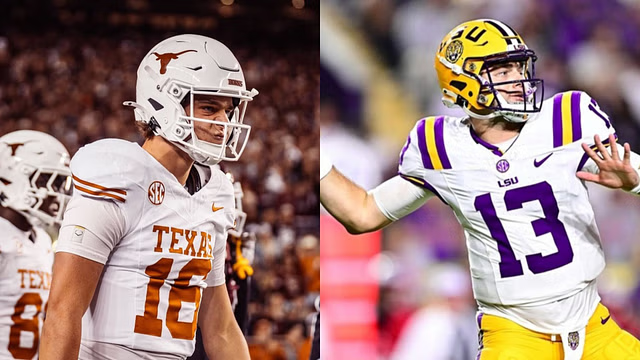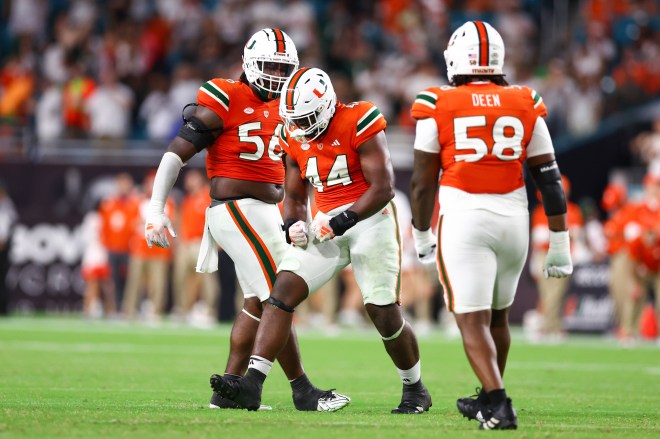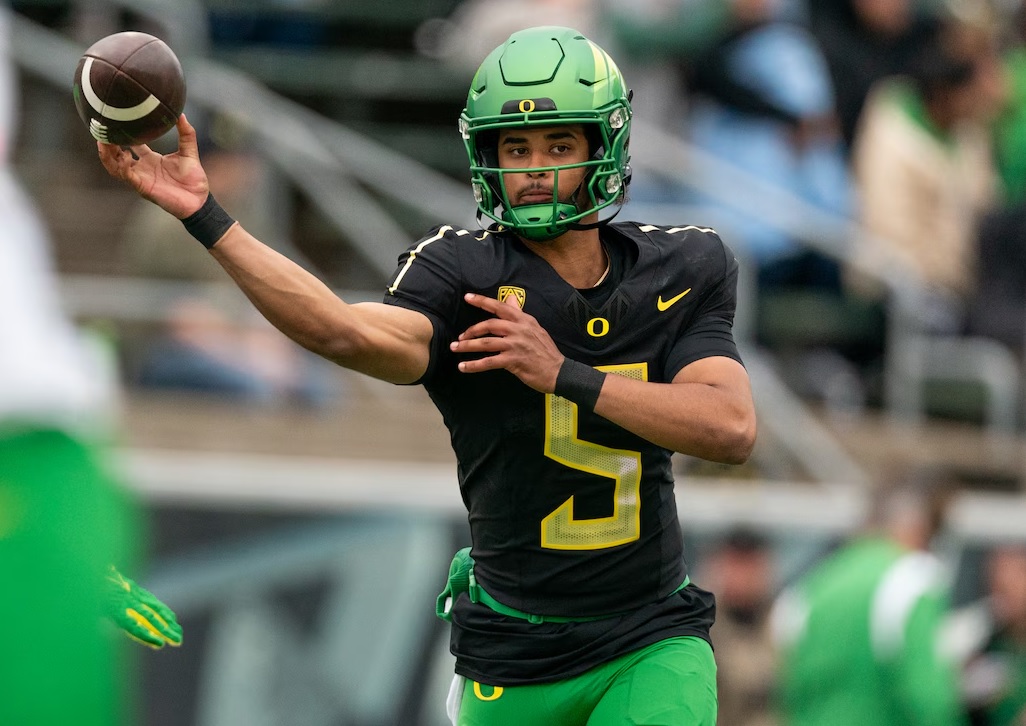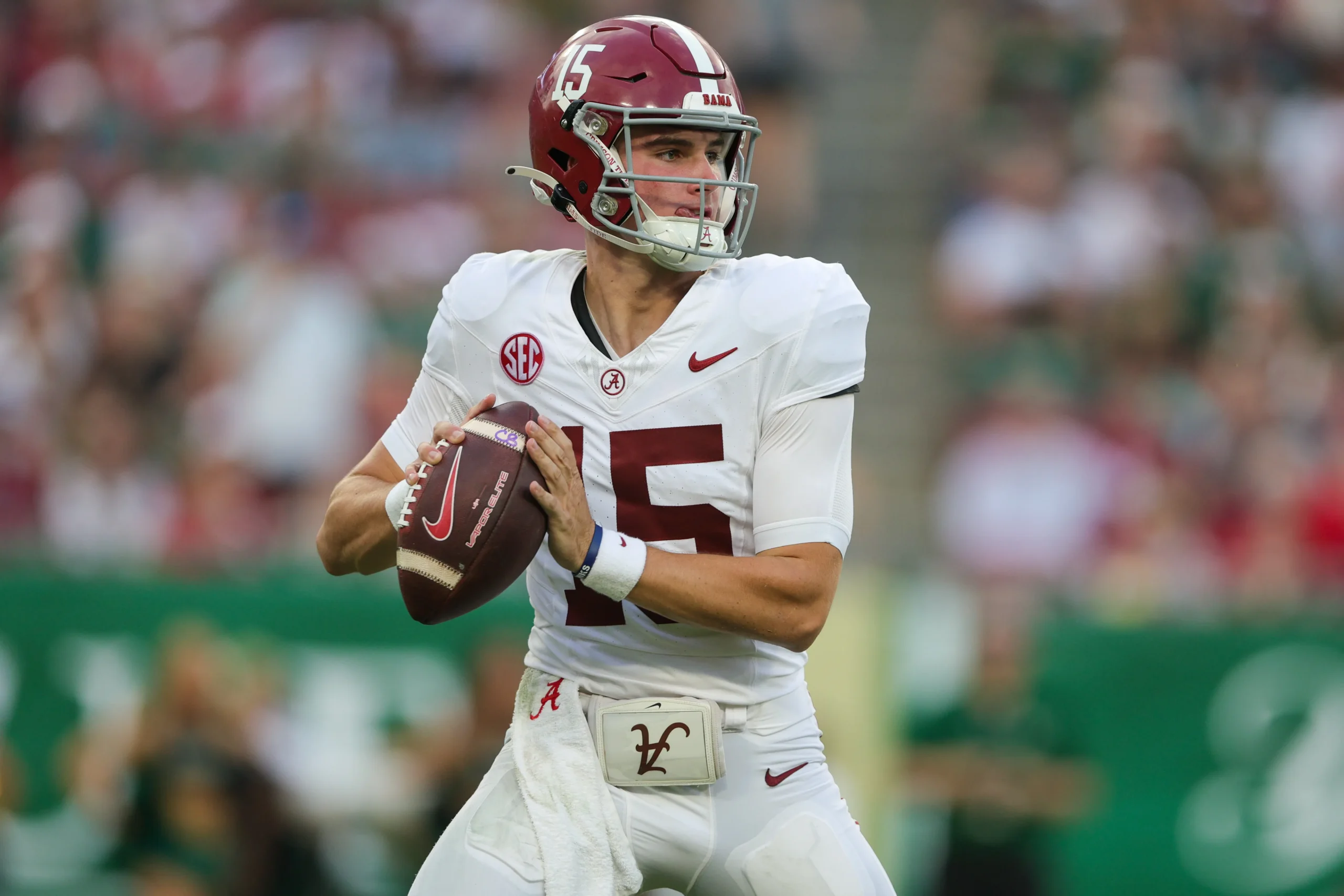By Charlie Campbell.
Send Charlie an e-mail here: [email protected]
Follow Charlie on Twitter @draftcampbell for updates.
This page was last updated March 10, 2020. Follow me @walterfootball for updates.
Wide Receiver Class
Early-round talent: A+
Mid-round: A+
Late-round: A
Overall grade: A+
2020 prospects vs 2019
Jerry Jeudy
CeeDee Lamb
Henry Ruggs
Marquise Brown
Tee Higgins
Laviska Shenault
Jalen Reagor
N’Keal Harry
Deebo Samuel
A.J. Brown
Justin Jefferson
Brandon Aiyuk
J.J. Arcega-Whiteside
Parris Campbell
Andy Isabella
D.K. Metcalf
This year’s class of wide receivers is phenomenal. There is excellent talent for the first round of the 2020 NFL Draft, and there are wideouts who will go in the second and third rounds who would go a round higher in a typical year. There will be some superb value picks on the second day of the draft and into the early-rounds of day three. There also are some third-day sleepers who will slide into the late rounds and turn out to be steals. This is a rare A+ class, and it would make sense for teams to draft receivers even if they don’t have a need because they are getting great value for depth and competition.
If you were to merge the two classes together, Jerry Jeudy and CeeDee Lamb would be the top receivers. They’re virtually tied for that designation this year. Henry Ruggs would have been the top wideout in last year’s draft. Tee Higgins, Laviska Shenault and Jalen Reagor are better prospects than N’Keal Harry was. I personally liked Deebo Samuel and A.J. Brown a lot more than Harry, and I liked those two more than Marquise Brown as well. I think Justin Jefferson and Brandon Aiyuk are not as good of wide receiver prospects as Samuel and A.J. Brown, but I think there is a good chance that Jefferson and Aiyuk will be selected earlier than where Samuel and A.J. Brown went.
Safest Pick: Jerry Jeudy, Alabama

Previous Picks:
2019: Deebo Samuel
2018: Christian Kirk
2017: Corey Davis
2016: Will Fuller
2015: Amari Cooper
2014: Sammy Watkins
2013: DeAndre Hopkins
My track record here is pretty good. Hopkins has turned into one of the best players in the NFL, regardless of position, and is a phenomenal play-maker. Watkins has played well when healthy. Cooper has been inconsistent, but looks like he is still going to have a decent NFL career. Fuller has been excellent when healthy and is underrated across the league. Davis was injured for a lot of his rookie year and has been a disappointment. Kirk had a solid start to his career, and Samuel was sensational as a rookie.
This was a tough choice between Lamb and Jeudy. I gave Jeudy the edge, however, for a few reasons. One, I think Jeudy is more focused on football and being great. I also think his quickness and route-running will lead to him generating separation consistently, which will translate into him being a good pro.
Biggest Bust Potential: Denzel Mims, Baylor

Previous Picks:
2010: N’Keal Harry
2018: Auden Tate
2017: Curtis Samuel
2016: Corey Coleman
2015: Devin Funchess
2014: Kelvin Benjamin
2013: Cordarrelle Patterson
My track record here is pretty good. Harry was a disappointment as a rookie, but he has time to turn it around. Tate was a seventh-round pick, so if he doesn’t pan out for the Bengals, he wouldn’t be a true bust given where they took him. Samuel is a solid starter for Carolina, so he has not turned into a bust.
Other than Samuel, the rest of the group look like a collection of busts. I almost went with Laquon Treadwell in 2016 before choosing Coleman. Both of them have been major disappointments as first-round picks, and Coleman was a huge bust for the Browns. Funchess had a decent season for Carolina, but overall, he was a disappointment and the Panthers let him leave in free agency. Benjamin has had a roller coaster career, and he ended up being a bust for Carolina and Buffalo. Patterson was a bust for Minnesota.
Mims is a very polarizing player, and I’m in the camp that believes Mims could be a disappointment. The evaluators who don’t like Mims note he was not a separation receiver at Baylor, which the tape proves. TCU’s Jeff Gladney among others were able to run the route and keep Mims from getting open. Those team evaluators say Mims also has some issues with drops, does not play as fast as his timed speed, and is not great on 50-50 receptions. Some of them had Mims graded on the third day of the 2020 NFL Draft, and I think Mims is more of a backup and rotational player in the NFL.
Wide Receiver Rankings by Attributes
Separation:
NFL prototype: Antonio Brown, Free Agent
- Jerry Jeudy
- Jaelen Reagor
- Henry Ruggs
- Laviska Shenault
- CeeDee Lamb
- Justin Jefferson
- Brandon Aiyuk
- Tee Higgins
Recap: A few wide receivers coaches told me that the ability to separate from coverage is the first trait they looked for when scouting draft prospects. Jeudy is the best in this draft class at creating space from defensive backs. He does it with good speed, quick feet, fast route-running, and suddenness out of his breaks. His separation skills are one of his best traits.
Reagor and Ruggs are ultra-fast receivers who can separate from defensive backs based on pure foot speed. They are tough for defenders to run with and are able to generate space running by vertically or crossing the field. Both Reagor and Ruggs are threats to blow by defensive backs on any snap.
Shenault and Lamb are shifty receivers who have short-area quickness and enough speed to work themselves open in the intermediate part of the field. Both of them can challenge defensive backs with their route-running and athleticism.
Jefferson can achieve separation via his speed when running vertical routes downfield. Some defensive backs have a hard time keeping up with him, and he can accelerate away from them.
Aiyuk has good speed and can work himself open. College defensive backs regularly caught up to him, so in the NFL, he could produce separation, but good corners will be able to run with him.
Higgins may struggle to generate a lot of separation from NFL cornerbacks. However, he is a size mismatch who will present the danger of winning a lot of contested catches over defensive backs. Thus, Higgins does not have to be wide open to make big plays.
Hands:
NFL prototype: DeAndre Hopkins, Texans
- CeeDee Lamb
- Tee Higgins
- Laviska Shenault
- Justin Jefferson
- Brandon Aiyuk
- Jaelen Reagor
- Jerry Jeudy
- Henry Ruggs
Recap: This is a nice crop of sure-handed receivers. Lamb has excellent hands. I like how he attacks the football and doesn’t wait for it to come to him. Higgins possesses very good hands. He has the strength to snatch the ball and rip it out of the air. Shenault has steady hands and is reliable. Jefferson has reliable hands and can make some difficult catches look easy. Harry has solid hands overall, but occasionally, he would drop a pass with defenders closing around him.
Reagor is a smaller speed receiver, and while they can drop more passes than big receivers, Reagor is generally reliable. Jeudy and Ruggs don’t have bad hands, but they drop some passes. Their drop rate was not anything alarming, but they have room for improvement in the NFL.
Deep Speed:
NFL prototype: Odell Beckham Jr., Browns
- Henry Ruggs
- Jaelen Reagor
- Jerry Jeudy
- Justin Jefferson
- CeeDee Lamb
- Brandon Aiyuk
- Laviska Shenault
- Tee Higgins
Recap: There a number of receivers in this group who have the ability to stretch the field vertically. Ruggs and Reagor are legit deep-threat receivers with dangerous speed. They are very fast, allowing them to take the top off of a defense. Both have deep speed such that it is special dimension they bring to the table. Ruggs and Reagor could be two of the most dangerous deep-threat receivers in the NFL over the course of their careers.
Jeudy is dangerous when running verticals, as he has the quickness to burn coverage over the top. Jefferson has the speed to beat teams over the top as well and is a threat to score long touchdowns. Defenses have to account for both of them in the deep part of the field.
Lamb is a not a deep speed receiver who burns defenses with pure explosion, but he can make some plays downfield. He has quickness and is adept at making acrobatic catches downfield along the sideline with defenders close by him.
Aiyuk and Shenault aren’t pure speed demons, but both are dangerous after the catch to produce big plays for their offenses. Higgins is not a burner, but he has enough quickness to get downfield and then use his mismatch size along the sideline, which makes him a threat to produce some big plays.
Route-Running:
NFL prototype: A.J. Green, Bengals
- Jerry Jeudy
- CeeDee Lamb
- Laviska Shenault
- Justin Jefferson
- Henry Ruggs
- Tee Higgins
- Brandon Aiyuk
- Jaelen Reagor
Recap: Route-running is a critical part of gaining separation in the NFL. Receivers who get sloppy with their routes have a hard time getting open. Extra steps allow defensive backs to maintain coverage or more time to recover. All eight wideouts in this group are quality route-runners.
Jeudy is a superb route-runner. He is sudden and quick in and out of his breaks, and his route-running can often produce separation from cornerbacks.
Lamb is a very polished receiver with advanced route-running. By using his precise feet and ability to avoid wasted steps, he consistently generates separation.
Shenault and Jefferson are plus route-runners. Shenault is a smooth with running slants, crosses, outs and dig routes. Jefferson’s speed allows him to quickly get open in the short to intermediate part of the field. He does a nice job of running downfield routes, displaying suddenness out of his breaks.
Ruggs and Higgins are quality route-runners. With his great foot speed, Ruggs is tough to cover and is fast through the route. Higgins is quick enough, and his size allows him to present a good target on short to intermediate routes.
Scouts who covered Arizona State told me that Aiyuk was not a great route-runner in games and practice. He should work to improve his route-running for the NFL. Sources also said Reagor needs to be taught a lot when it comes to route-running because his college offenses did not prepare him well.
Yards After the Catch:
NFL prototype: Julio Jones, Falcons
- CeeDee Lamb
- Jerry Jeudy
- Laviska Shenault
- Brandon Aiyuk
- Jaelen Reagor
- Henry Ruggs
- Justin Jefferson
- Tee Higgins
Recap: The ability to turn a short reception into a big gain can make a receiver elite. Among the eight receivers above, all of them have some yards-after-the-catch (YAC) ability, and I wouldn’t say there is one who is really bad at increasing the length of their receptions.
That being said, the top four are pretty special. Lamb is very dangerous with the ball in his hands. He uses his well-built frame to break tackles and is very difficult for a lot of defensive backs to get on the ground. His strength to run through their hands makes it difficult for them to get a hold of him. While he isn’t a burner, he has a second gear to run away from defenders in the open field and is an elusive runner in space. Lamb has good feet and moves to change direction. Whenever he touches the ball, he is a dangerous threat to rip off a long gain because of his tremendous YAC skills.
Jeudy is excellent after he catches the ball. He is very elusive in the open field, showing phenomenal feet to dodge tacklers, stop/start, and cut through the secondary. Jeudy’s YAC skills in combination with his speed make him very dangerous in terms of turning a short reception into a long gain.
Shenault and Aiyuk can be dynamic in the open field. Both have the speed and explosion to dart downfield as well serious elusiveness to dodge tacklers. Each has the strength to break some tackles and finish plays well. Both Shenault and Aiyuk can also serve as running backs who can dangerously rip off good gains.
Reagor, Ruggs and Jefferson are very capable of picking up yards after making a catch. They are more straight-line runners who pull away from defenders and use their speed to rip off yards in a hurry. With some work, Reagor has upside to grow here and be special. Higgins is not a blazer or dynamic after the catch.
Red Zone:
NFL prototype: DeAndre Hopkins, Texans
- Tee Higgins
- CeeDee Lamb
- Jerry Jeudy
- Laviska Shenault
- Justin Jefferson
- Brandon Aiyuk
- Henry Ruggs
- Jaelen Reagor
Recap: This was a tough category to rank because so many of the receivers were excellent point producers in college. Higgins (6-4, 216) was phenomenal in the red zone, amassing 25 touchdowns over the past two seasons. He is a dangerous red-zone threat given his length, leaping ability and strong hands. Higgins was a point machine for Clemson in 2019, dominating the end zone. His talent inside the 20 is one of his best traits for the NFL.
Lamb tied Higgins for 25 touchdowns over the past two seasons. Lamb can use his size and strength to work through defenders while presenting a good target. His route-running, YAC skills, and ability to pick up yards after contact make him dangerous to score from some distance out.
Jeudy has a nose for the end zone, as he uses his explosive speed to get open on short routes. His ability to quickly ceate separation makes him a red-zone weapon.
It might be surprising that Shenault is rated ahead of four of these wideouts he had the smallest total of touchdown catches over the past two seasons with 10. However, Shenault was also a short-yardage wild-cat back over that time and scored seven times in that role. The 6-foot-1, 227-pounder is strong, physical, tough and has a nose for the end zone. He should be a valuable contributor in the red zone as a pro.
Aiyuk is similar to Shenault with his build and a tough running style in combination with a burst to dart into space. In the NFL, Aiyuk should be a solid receiver to contribute to his red-zone offense.
Jefferson was massive point producer in 2019 with 18 touchdowns. It tripled his 2018 total, but he should be a quality red-zone contributor at the next level. He has the size, quickness, length, and leaping ability to prove to be a scoring threat.
Ruggs and Reagor found the end zone well for their college teams. Ruggs notched 18 touchdowns over the past two years while Reagor score 14. Each is a threat to score on any reception, but in the condensed field, both are restricted vertically. Still, they can contribute via their speed to uncover and get open quickly.
NFL Power Rankings - Dec. 23
NFL Picks - Dec. 22
2026 NFL Mock Draft - Dec. 17
Fantasy Football Rankings - Sept. 1




